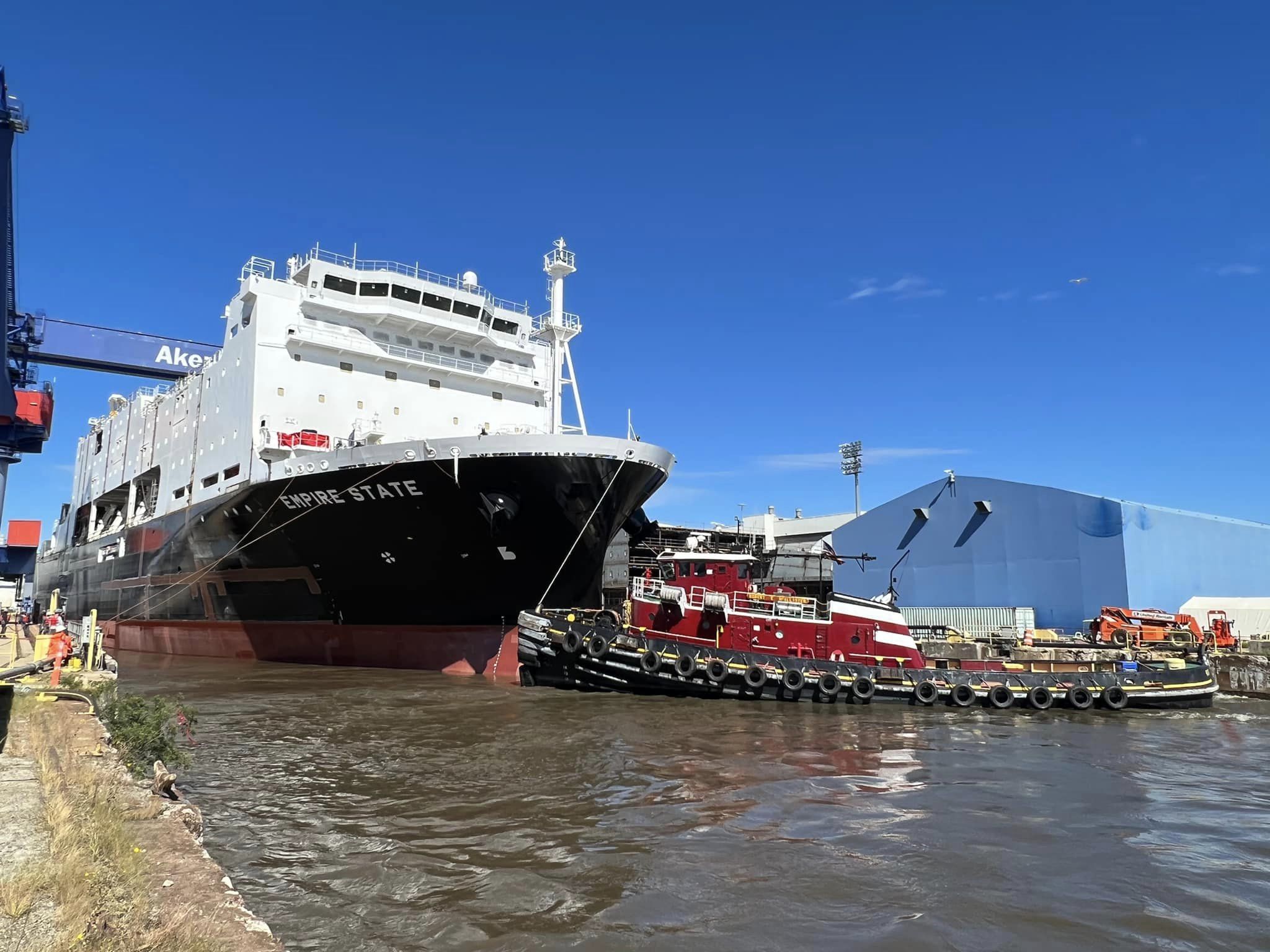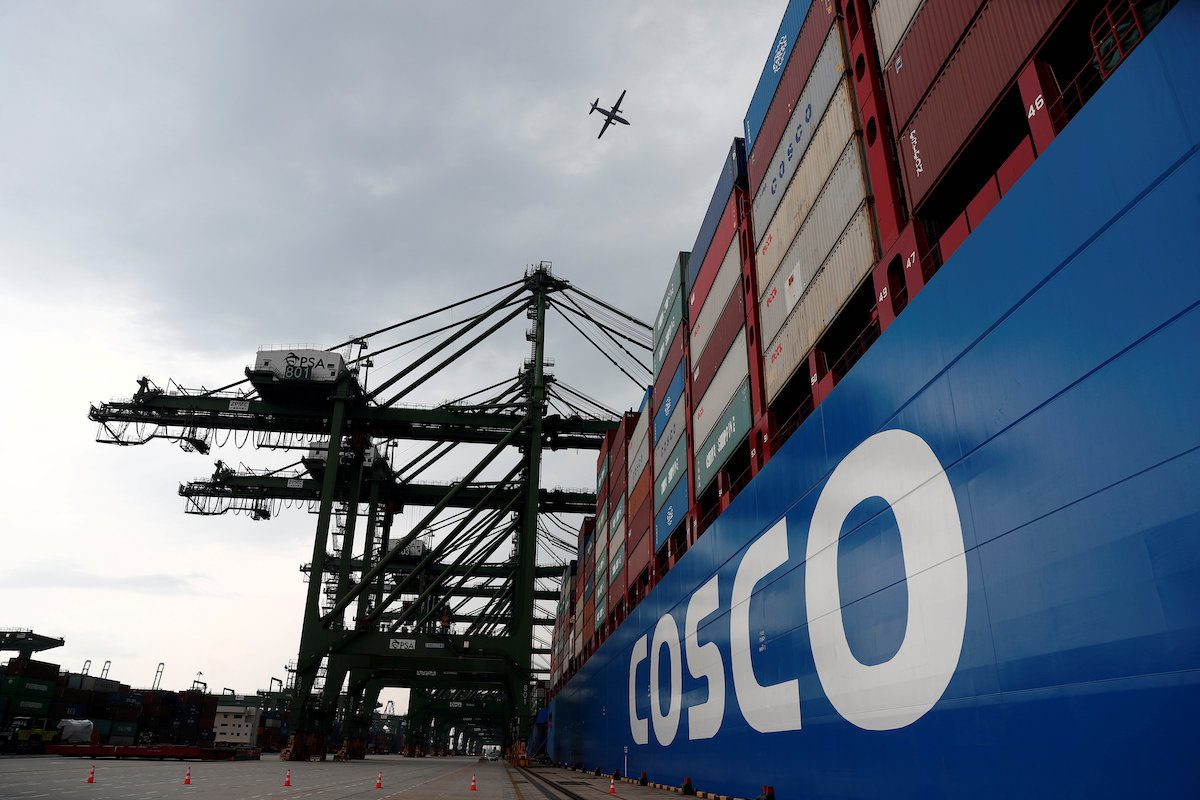The SHIPS for America Act, introduced today by Senators Mark Kelly and Todd Young and Representatives Trent Kelly and John Garamendi, proposes a sweeping overhaul of U.S. maritime policy aimed at rebuilding the U.S. Merchant Marine, shipbuilding capacity, and maritime workforce.
The bill is paired with the Building SHIPS in America Act, which includes tax incentives and financial tools to strengthen domestic ship construction. Below is a breakdown of the major provisions:
1. Oversight and National Coordination
- Establishes a Maritime Security Advisor in the White House and a new Maritime Security Board to coordinate maritime policy across federal agencies.
- Enhances the role of the Maritime Transportation System National Advisory Committee and mandates direct hiring authority for key maritime positions.
- Requires biennial progress reports and oversight from the GAO and the Federal Maritime Commission.
2. Maritime Security Trust Fund
- Creates a dedicated Maritime Security Trust Fund, modeled after transportation trust funds, funded by duties, tonnage taxes, and penalties—especially targeting Chinese and other adversary-linked vessels.
- Prevents suspension of tonnage taxes for flagged vessels from foreign adversaries.
3. Sealift and Strategic Capability
- Declares it U.S. policy to maintain a U.S.-flagged strategic fleet, with coordination between DOT and DOD.
- Expands the National Freight Strategic Plan to include sealift and amends laws to counter unfair foreign shipping practices.
4. Strategic Commercial Fleet & Cargo Preference
- Launches the Strategic Commercial Fleet Program to grow the U.S.-flag fleet to 250 ships, incentivizing new U.S.-built, U.S.-flagged, and U.S-crewed vessels.
- Allows interim foreign-built ships but phases them out after FY2030.
- Prioritizes tanker procurement, undersea cable security, and U.S. shipyard repairs through steep tariff penalties.
- Expands cargo preference rules: 100% of U.S. government cargo must move on U.S.-flagged vessels, including imports from China (target: 10% within 15 years).
- Creates the Ship America Office to promote U.S. shipping and consumer awareness.
- Streamlines U.S. Coast Guard compliance through the Alternate Compliance Program.
- Forms a Rulemaking Committee to align U.S. maritime regulations with IMO standards while protecting national interests.
- Modifies the 1851 Limitation of Liability Act to increase foreign vessel liability.
6. Shipbuilding Investment
- Authorizes $250M annually (FY26–35) for domestic shipbuilding projects.
- Provides $100M/year for small shipyards and expands eligibility.
- Converts Title XI financing into a revolving loan fund.
- Modernizes Construction and Capital Construction Funds, opening them to more maritime actors including marine terminal operators.
- Streamlines environmental reviews and unlocks DOE loan guarantees for maritime infrastructure.
- Mandates assessments on Chinese-linked logistics threats like LOGINK.
7. Defense Shipbuilding Integration
- Requires DOD and Navy to incorporate commercial best practices and use Defense Production Act authoritiesto boost shipyard capacity.
- Enhances recruitment and retention for Military Sealift Command.
8. Innovation and Infrastructure
- Funds regional Maritime Innovation Incubators at $50M/year, focusing on R&D in shipbuilding, fuels, vessel design, and port infrastructure.
- Strengthens ties to the National Shipbuilding Research Program (NSRP).
9. Maritime Workforce Development
- Makes mariners and shipyard workers eligible for Public Service Loan Forgiveness and GI Bill benefits.
- Establishes new recruiting pipelines via DoD, schools, and transition programs for veterans.
- Expands support for the Naval Sea Cadet Corps and international academic exchanges in naval architecture.
10. Maritime Academies
- Modernizes the U.S. Merchant Marine Academy (USMMA) and raises it to parity with other service academies.
- Boosts support and enrollment for State Maritime Academies (SMAs), including fuel, scholarships, and training ship integration into naval exercises.
11. Licensing and Credentialing
- Digitizes the merchant mariner credentialing system, revises training standards, and clarifies renewal/expiration rules.
- Authorizes emergency reactivation of expired mariner credentials and extends eligibility to American Samoans.
12. Tax Incentives (Building SHIPS in America Act)
- Establishes a 33% tax credit for building U.S.-flagged vessels, with bonus credits for U.S. insurers and class societies.
- Exempts various maritime program payments from gross income.
- Expands access to tonnage tax regimes and capital gains exemptions in new Maritime Prosperity Zones.
- Creates 25% tax credits for investments in shipyards and related facilities.
This ambitious legislative package represents one of the most comprehensive efforts in decades to reestablish the United States as a global maritime power, building on President Trump’s recent shipbuilding executive order following the U.S. Trade Representative’s findings regarding China’s shipbuilding dominance.
By combining regulatory reform, industrial investment, cargo policy, and workforce development, the SHIPS for America Act seeks to ensure that U.S.-flag ships, shipyards, and mariners can once again compete—and win—on the world stage.
A detailed section-by-section guide to the bill can be found here.

 Join The Club
Join The Club











